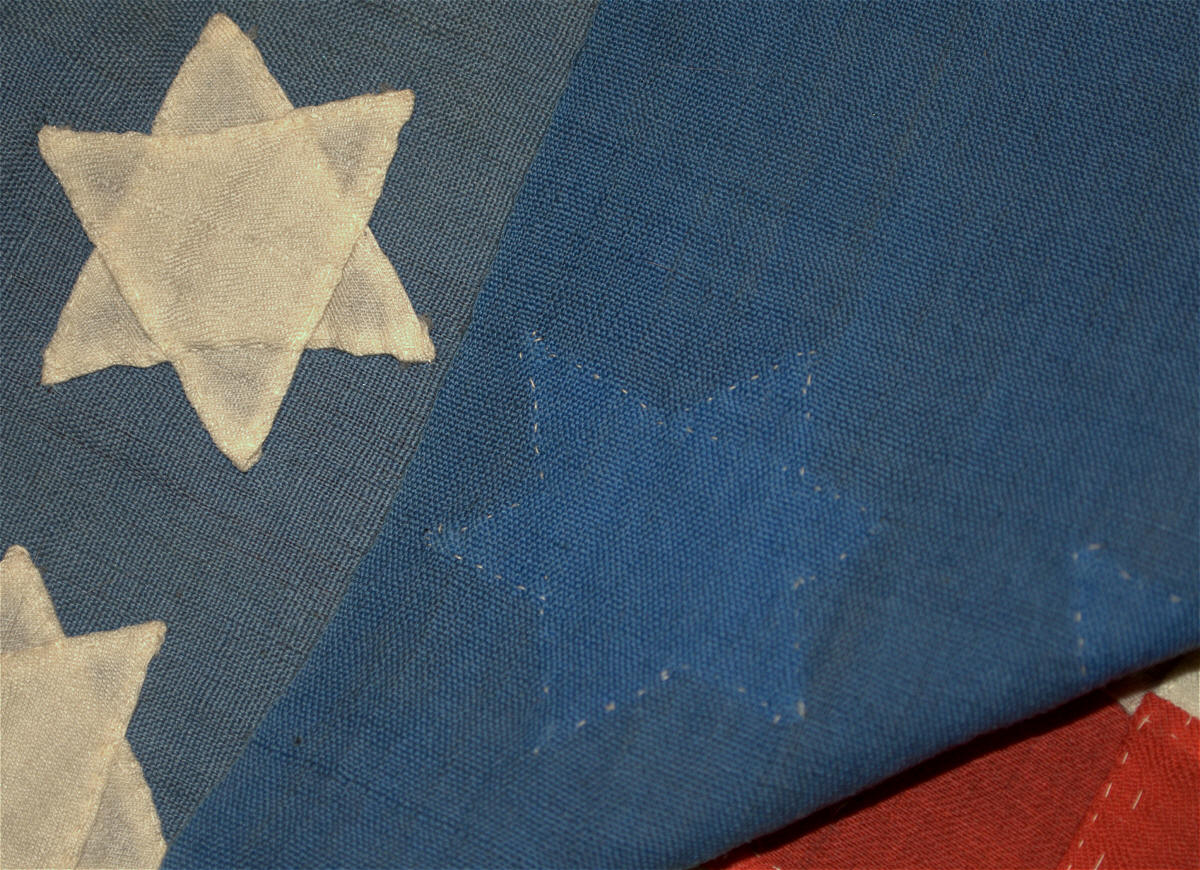
Six pointed stars on
American Flags are a very rare trait, shared only by a
handful of known examples. The same can be said of
flags with cantons arranged in a six-pointed great star
configuration. This configuration of stars on a
flag of pieced and sewn construction is known on less
than four or five surviving flags. The pattern is very similar to the
star pattern seen on the official Great Seal of the
United States. The first die of the Great Seal,
cast from brass in 1792, featured a "glory" of six
pointed stars arranged to form a single six pointed
star. Although the "glory" on the Great
Seal is
oriented to with a single star at the top, the "glory"
pattern on this flag is rotated 90 degrees.
The flag's hand sewn construction and materials are
consistent with the second half of the 19th
century. A charming and clever technique used by the
seamstress to create the
six-pointed stars involved hand stitching two triangles,
one overlapping the other, to form each star.
The flag is
single-sided and the front of the flag has
slightly faded to a pale blue, indicating the
front was displayed and exposed to air and light
for some period of time. The reverse of the
canton fabric is a bit oxidized and faded,
though the fabric under the stars oxidized at a
different rate and is a brighter blue. The
fabric beneath the linen stars, being protected
by the stars themselves, is
closest to the original color of the canton.
The wool used for the flag is an extremely fine and
tight weave. The flag is stitched with
very small, fine quilting stitches. The
even rows, fine stitching, and presence of the
wool's selvedge at the top and bottom of the
flag, are all evidence that its maker was a very experienced seamstress.
Beautifully proportioned with its elongated
stripes and striking canton, the flag is one of
the most unusual and unique early thirteen star
American flags. |
 |
|
Evidence of aging
and exposure of the front of the
flag to light and oxidation over a
long period of time. |
|
|

